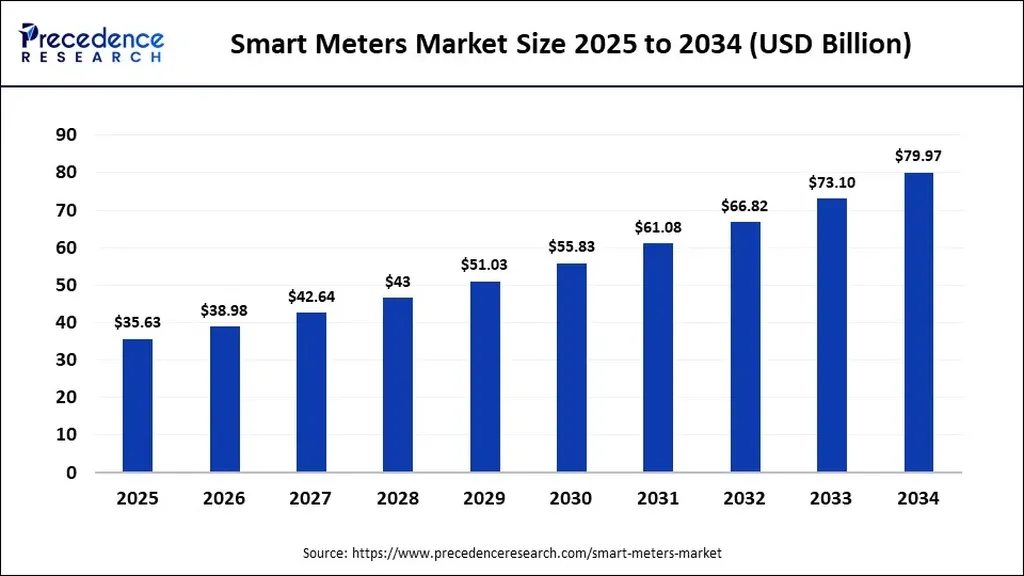The global smart electric meters market is poised for substantial growth, with the market size expected to more than double from USD 17.6 billion in 2024 to USD 40.2 billion by 2034, driven by a compound annual growth rate (CAGR) of 7.9%. This expansion is not merely a numerical projection but a reflection of deeper shifts in energy consumption, technological integration, and regulatory landscapes.
The rising demand for energy efficiency and conservation is a significant driver. Consumers and utilities are increasingly adopting smart meters to monitor real-time energy consumption, enabling better management and reduction of waste. This trend is bolstered by government regulations and incentives, which are promoting smart meters as part of broader smart grid initiatives and efforts to reduce carbon emissions. Technological advancements, particularly in communication technologies like IoT, LTE, and NB-IoT, are making smart meters more reliable, affordable, and easier to deploy, further accelerating market growth.
However, the path is not without challenges. High installation and maintenance costs can be substantial barriers, potentially hindering widespread adoption. The initial investment required for hardware, infrastructure, and ongoing maintenance is a significant hurdle that market players must address.
The integration of smart meters with smart grid and renewable energy systems presents a significant opportunity. Smart meters can facilitate better integration of renewable energy sources, enhancing grid stability and efficiency. This synergy is crucial as the world transitions towards cleaner energy solutions.
Market leaders like Itron, Landis + Gyr, Honeywell International, Siemens, and Schneider Electric collectively hold a 30% market share in 2024. Siemens Energy, for instance, is a leading provider of innovative smart electric meters solutions, integrating advanced control systems and digital automation to enhance grid stability, inertia, and reactive power support. Schneider Electric, on the other hand, delivers tailored solutions with a strong emphasis on modularity, ease of integration, and digital control capabilities, supporting utilities in maintaining grid stability, voltage regulation, and energy transition efforts.
Regionally, the Asia Pacific is the largest market, while Europe is the fastest-growing region. North America is also an emerging market with significant potential. The future outlook is promising, with increased demand for advanced smart electric meters to enable efficient and reliable energy management. This will drive enhancements in data analytics, predictive maintenance, and automation, making energy systems more intelligent and responsive.
The implications for the market are profound. The growth of smart electric meters will not only drive technological advancements but also influence regulatory frameworks and consumer behavior. As the market evolves, it will be crucial for stakeholders to address the challenges of cost and integration while capitalizing on the opportunities presented by smart grid and renewable energy systems. The development of the smart electric meters market is a microcosm of the broader energy transition, reflecting the complex interplay of technology, policy, and consumer demand.

